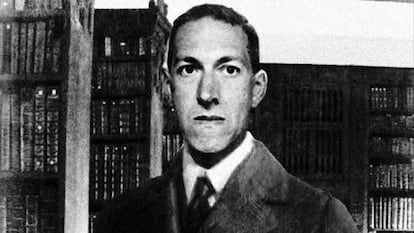It was a complete eureka. Sandy Petersen (San Luis, United States, 69 years old) remembered it this summer at the Celsius 232 festival in Avilés, an annual event that has brought together the best of the fantasy genre in the Asturian city for 13 years: “I realized that in dungeons and dragons The gameplay cycle is as follows: kill the bad guy, upgrade your character, kill the bad guy, upgrade your character. But I realized that, to make a game based on Lovecraft, this didn’t make sense. If you were being pursued by terrifying cosmic and sectarian horrors, combat could not be the solution, because what you were facing was too terrifying. That’s why I realized that my gameplay cycle had to revolve around research. Players would investigate mysteries and become absorbed in them. “That completely changed the dynamic of the game.”
The game Petersen is referring to is The Call of Cthulhuone of the largest role-playing franchises—theatrical games in which a group of players plays a set of fictional characters guided by a narrator: the Game Master—and, in countries like Japan, even more popular than dungeons and dragonswhich turns half a century this year. Petersen created it in 1981, commissioned by Chaosium, a publishing house that would explode as one of the great references of the role thanks to Runequest and especially to The call of Cthulhu. But the greatest impact that creating this role-playing game had was suddenly making Lovecraft and his myths part of the heritage of popular culture: “Every time I see a stuffed animal of Cthulhu (one of Lovecraft’s most famous deities, a cephalopod with large wings of enormous proportions) on a t-shirt like yours, I think that, at least in part, Lovecraft owes me this. So I can only be proud of having brought it to the general public.”
It was not what Petersen thought was going to happen with the game: “Simply, (publisher Chaosium) had the rights to adapt Lovecraft. I thought it was going to be a niche game, that it would sell a few thousand copies to whoever the Lovecraft fans were in the early eighties, and then it would fade away. But it struck a chord with people. To the point that thousands of people say they started reading Lovecraft because of my game. In 2010, I was invited to a film festival dedicated to Lovecraft and given a bust of him after claiming that he is so popular today because of what I did in The Call of Cthulhu”.
This milestone alone, evidently, would have already earned Petersen his golden page in pop culture history. But his career continued to strive to mark historical milestones. A decade after creating this RPG myth, Sandy Petersen joined a small group of developers, John Carmack and John Romero, who were working on a violent and savage game: Doom.
Petersen joined after the firing of another designer whose work worked and was responsible for creating the majority of the levels in one of the most popular video games of all time. The lessons he had learned about interactive horror in The Call of Cthulhu soaked the pixelated labyrinths of Doom. “I used that knowledge to make its terrifying levels. For example, I always found it scarier to glimpse a small detail of the horror you’re about to face than to simply use a jump-scare (the classic cinematographic scare that takes advantage of negative space and depth of field to shock the protagonist and the viewer, with a great sound, when the monster or villain appears). Romero, also a designer of Doom, He teleported enemies behind the player’s back to get that scare. But I preferred to give the player a hint. A painting of a monster or something terrible. Or I would have them walk into a room and find a pedestal bathed in a beam of light. And on it, something valuable, like the BFG (Big fucking guna huge fucking weapon, the most powerful in the game) that the player craved. But everything in the way I presented it to her told her that, as soon as I caught her, hell was going to break out.”
The process of creating this horror in dungeons and labyrinths infested with demons is more artisanal than one might think: “For many of them, I made a diagram on paper before turning to the level editor (computer tool to create a level of a video game ) and some seemed to grow on their own. Suddenly, I had an idea for a section. Using the cinematic simile, it would be ‘the cool scene’. Then I saw how I should get to it: a staircase here, and then an open space, and then you go up again, but behind you a tide of acid begins to rise and now you have to find a way to escape the acid. And so he built, sometimes also trying to evoke in the player’s mind that there was more than what he saw. For example, one level was shaped like a gigantic hand, and when you realized it, you started navigating it by imagining which finger you were on.”

Petersen’s passion for the craftsmanship of game design, whether digital or paper, is so enormous that his stay in Avilés, day after day, was summarized in the same routine: he had breakfast at the Palacio de Avilés, walked a few hundred meters to the arcades near the house of culture and the rest of the day was spent there, at the tables where open-air role-playing games were played. The Call of Cthulhu. Games that, during those six days of Celsius 232, fans were able to play with a creator who was, evidently, one of the gang.

